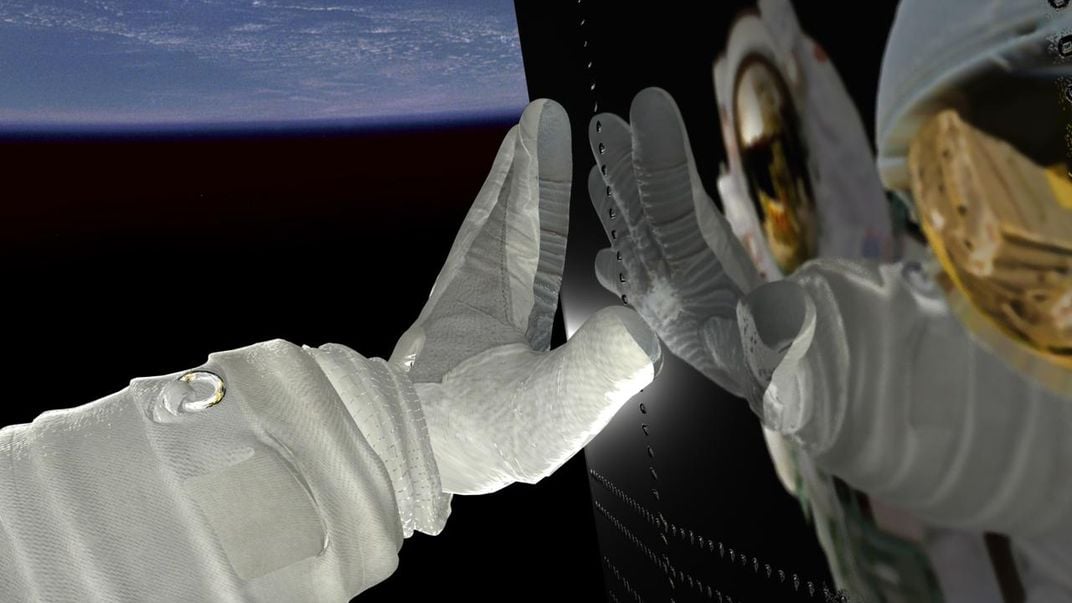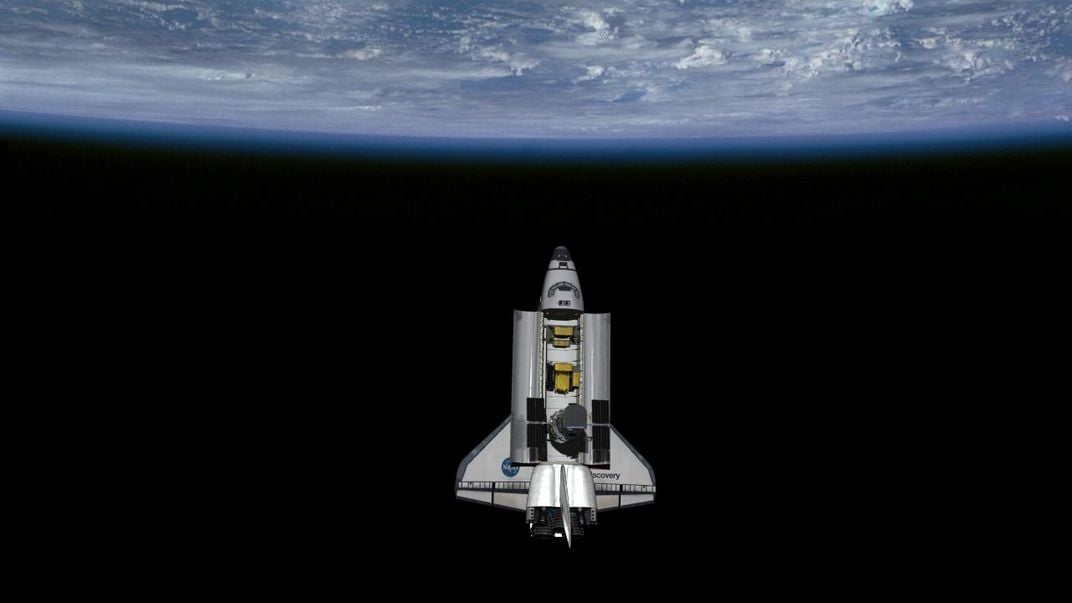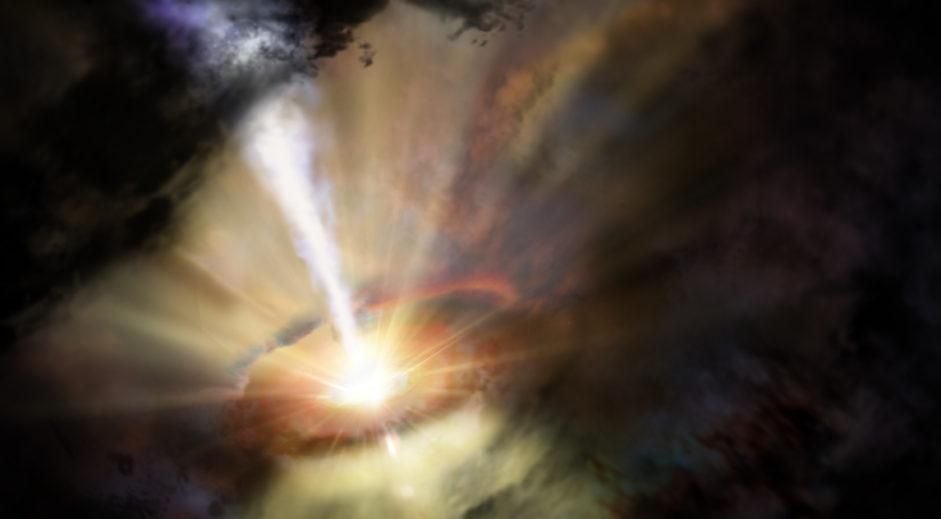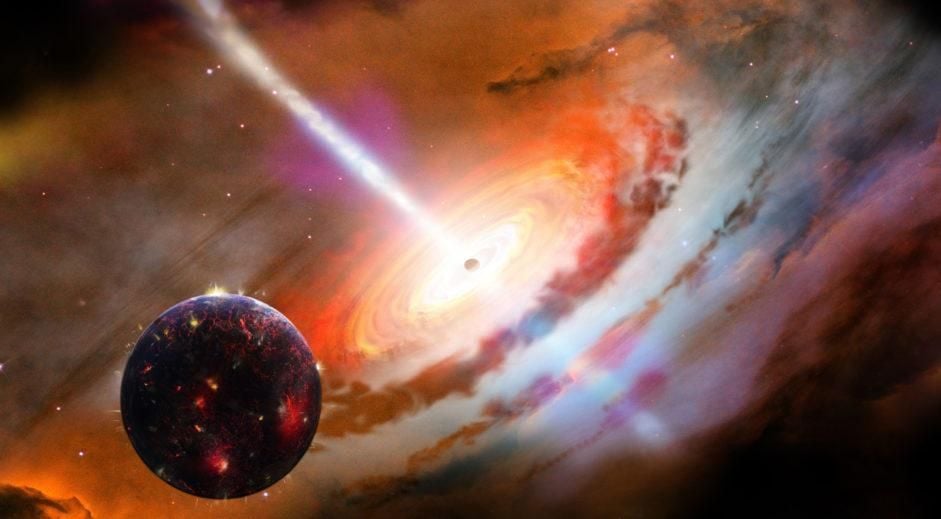The Supernova That Launched a Thousand Gorgeous Space Images
By colorizing one of the first Hubble satellite images, illustrator Dana Berry ushered in a new era of stunning space visuals
/https://tf-cmsv2-smithsonianmag-media.s3.amazonaws.com/filer/90/b2/90b2dfe5-a9ab-4821-9ccc-45ae1d52fa8a/blackholewithclouds_c-1-941x519.jpg)
In 1990, Dana Berry was messing around with a precursor to the software program Photoshop at NASA’s Space Telescope Science Institute, where he worked as a science visualizer. The Hubble Telescope had launched that year, and all around him, the Institute’s scientists were busy analyzing and releasing about a half dozen deep space images. But all were grainy and monochrome—not exactly ideal for conveying the dazzling mystery of the cosmos.
One day, astrophysicist Eric Chaisson walked over to Berry’s office with a picture of a supernova exploding. It was a remarkable event to be caught on camera, but the black-and-white palette did it no justice. Chaisson suggested that Berry colorize the image, mostly for the wow-factor. He argued that color was scientifically justifiable since the supernova actually did reflect colored light, but Hubble’s camera was only set to capture light at 5007 angstroms.
Berry sat down to his Silicon Graphics Iris 3130 computer—bigger than a mini-fridge with less computing power than the original iPhone—and began toying with the image. “I frankly couldn’t believe my good fortune that I was doing this,” Berry says now.
In keeping with Chaisson’s request, he colored the blob in the center pink because to represent hydrogen, which glows magenta when it burns in the laboratory. He colored the ring yellow because it emitted sulfur, which burns yellow in the lab. He colored the two stars on either side a kind of pool blue because hot stars burn either blue or white/blue. Berry was tempted to add small, distant stars in the background like you would see if the camera could’ve focused on the whole scene at once, but decided against it: “I handled that image as gingerly as I could, as if the scientific data was holy in a way,” he says.
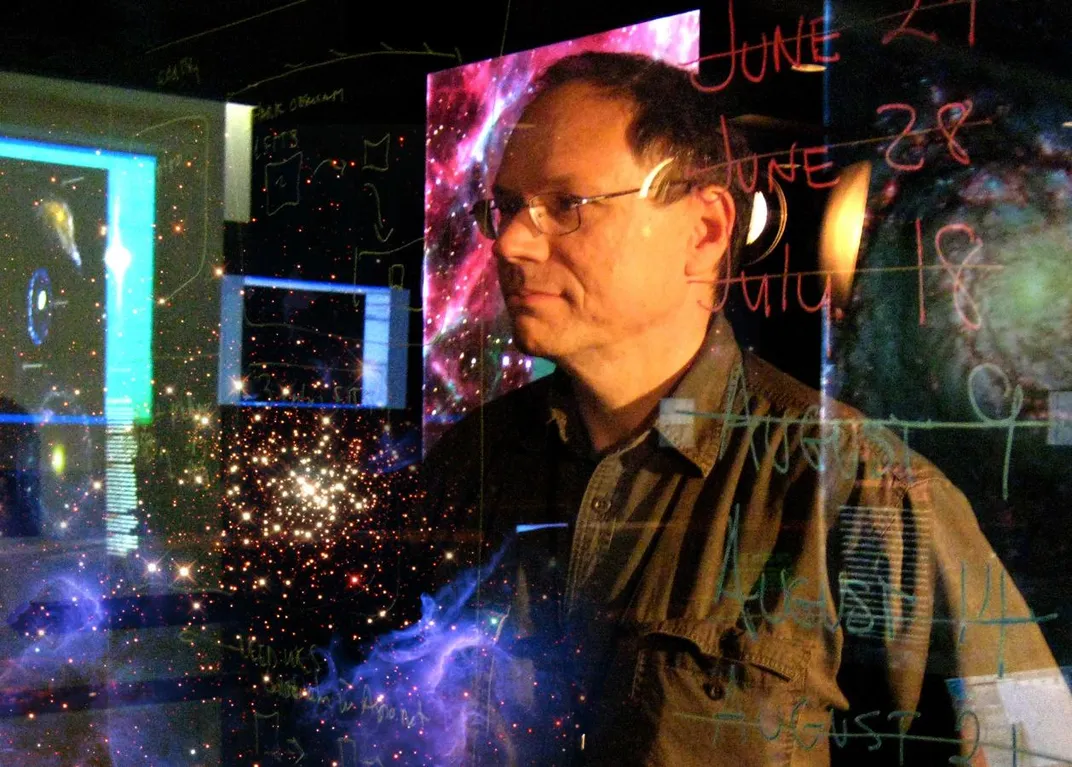
Berry’s admiration for NASA exploration went deep. When he was young, he followed the Apollo missions with great zeal. One day he and his father learned that one of the Apollo capsules would reenter the atmosphere and splash down over the Atlantic somewhere between their hometown, Myrtle Beach, SC, and Puerto Rico. They drove to the beach and looked out over the ocean for hours. Once, they swore they saw a white streak grace the sky. Berry was also inspired by Carl Sagan’s 1980 documentary Cosmos. In college, he majored in art but took as many astronomy courses as he could. In astronomy, “I could see these things I was reading about,” he says.
In 1987, he had graduated and was making digital graphics for businesses when he saw an ad for the job at the Space Telescope Science Institute. They were looking for a computer scientist, but he interviewed anyway and, as he puts it, “talked his way into the job.” When the first images started coming through, he and everyone at the Institute immediately started contemplating how they could be best used.
At the time, the space program was facing significant challenges. By the time Hubble launched, it had cost more than $2 billion and had the unfortunate timing of being the next big project to come after the space shuttle Challenger, which had exploded over onlookers in Florida. Everyone was watching Hubble. To add to the anxiety, scientists discovered post-launch that Hubble’s main mirror had a manufacturing defect.
News media ridiculed NASA, and Hubble became the butt of Jay Leno’s late-night jokes. “What sound does a space turkey make? Hubble, Hubble, Hubble,” the comedian quipped on an early 1990’s broadcast.
The first Hubble color image of Supernova 1987A, colored by Berry, was released to news media on August 29, 1990, and immediately mesmerized astronomy lovers and piqued the interest of the general public. The chatter among scientists was not all positive, though, Berry recalls. Some said the picture was not strictly accurate; artistic license had been taken with the color additions.
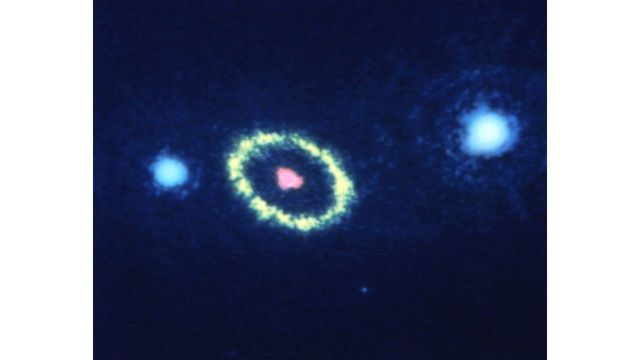
But beyond translating the science, Supernova 1987A and other images served another key purpose as well. They showed off what Hubble could do—that is, capture amazing images that ground telescopes couldn’t—and re-ignited the public interest in space exploration. “The value of the public outreach was not understood in the general scientific community,” Berry says, “but that changed and I think Hubble was a catalyst for that change.”
Other institutions took notice. After several years at the Space Telescope Science Institute, Berry took a job at Tufts University and then at NASA’s Chandra X-ray Observatory, which is headquartered at the Smithsonian Astrophysical Observatory, where he used similar techniques to color images of supernova, nebulae and planets. Sometimes the pictures were taken differently—through color filters or at multiple wavelengths—but for most of them, Berry relied on his trusty Photoshop to make them pop. Sometimes multiple images needed to be patched together or layered on top of one another to remove a cosmic glare and Berry did that, too. For Chandra, he also made animations of black holes and of the Chandra spacecraft itself, which are still used there today.
By this time, these institutions employed entire teams of science visualizers. Kimberly Arcand, now Visualization Lead at Chandra, recalls working with Berry for an animation of Cassiopeia A, a supernova remnant. “I definitely looked up to Dana as to what was possible in a career,” she says. Arcand is using the same decades-old data to make significantly more cutting-edge animations of Cassiopeia A in virtual reality.
After Chandra, Berry landed a job as lead animator at Wilkinson Microwave Anisotropy Probe, which brought back images in microwaves and whose scientists won the 2018 Breakthrough Prize for their detailed maps of the early universe. Meanwhile, the Hubble images, now colored by Berry’s successor and visualization savant Zolt Levay and his team, started to look more and more like paintings. Pillars of Creation, a mélange of 32 different images taken in 1995 by four different Hubble cameras, used a similar technique similar to what Berry used on his first job: green for Hydrogen, red for ionized sulfur, blue for ionized oxygen.
Pillars is now the most recognizable of all the Hubble images. And the technique of using art to communicate science had caught on: beyond still images, animation presented an opportunity for TV networks like Discovery, National Geographic and the Smithsonian to make more enthralling space documentaries, and Berry was interested in that direction as well. In the 2000s, Berry got a call from Steve Burns at Discovery Channel who was looking for someone to help produce the 25th-anniversary edition of Carl Sagan’s Cosmos, the iconic documentary he had admired as a kid.
A new age of space illustration, in pictures
Berry was jazzed. “I had basically been asked to clean up the Mona Lisa,” he recalls.
Berry combed through the film, cutting outdated bits and updating several animations. Ann Druyan argued that some animations should stay no matter what, like the line drawing of evolution through all of time. “Starting documentary work wasn't the same cold splash that landing the job at Space Telescope was, but I felt pretty excited nevertheless,” he says. He finished the update in a mere 3 months.
After Cosmos, Berry worked on an episode of The Universe series for The History Channel in 2008 and published the book Smithsonian Intimate Guide to the Cosmos in 2008. In the same year, he wrote and produced the documentary Hubble’s Amazing Universe for the TV show Naked Science, and in 2009 wrote and directed Alien Earths for National Geographic, which garnered an Emmy nomination.
In 2014, Berry was asked to work on a few mini-segments for the new Cosmos: A Spacetime Odyssey with Neil DeGrasse Tyson. His role would be pre-visualization: thinking about how to illustrate DNA dividing, water evaporating, and other things happening on a molecular scale. Dozens of other science visualizers and graphics people worked on the documentary. When it was released, Cosmos: A Space-time Odyssey became the most watched series ever for National Geographic International.
Today, there are frequently scientists who take issue with how science-minded films portray concepts like multi-dimensional worlds, time travel, and end-of-universe scenarios. But the value of using art for science outreach is indisputable. “Hubble set the bar, and established astronomy outreach as a really valid thing to do,” says Arcand. Another early colleague of Berry’s at The Space Telescope Science Institute, Ray Villard, now News Director there, agrees. “The success of the Hubble pictures is that they present the awe and wonder of the universe without scaring some people away with scientific terminology,” he says.
Berry is thankful for witnessing the growth of science visualization as a beloved profession. “One of the legacies of Hubble was the fact that art was brought into the service of science,” he says. “There will never be another big science project that doesn’t benefit from visualization tools."
Editor's Note, July 17, 2018: This article originally misstated that Berry used the software program Photoshop to create Hubble's first colorized photo, and that he used the program PowerPoint in 1987. A photo caption also misstated that Supernova 1987A was the first colorized space image; it was the first such image from Hubble. The article has been updated.
